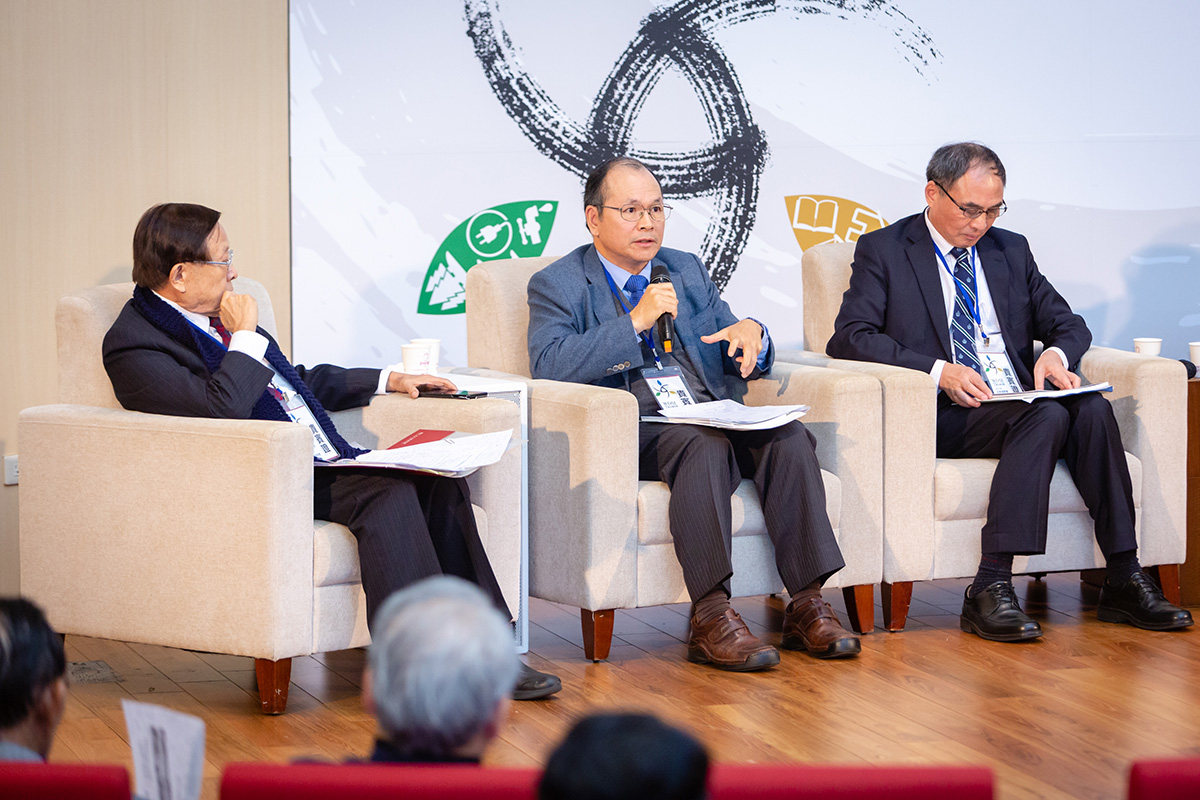
Panelist
Dr. Chu-chia Lin,
Professor, National Chengchi University; Former Minister, National Development Council
I think the Index is something which has significant meaning. When I served at the National Development Council, we were responsible for oversight and evaluation of Taiwan’s performance using global indices published by World Economic Forum (WEF) and Institute for Management Development (IMD), and we look at the data very closely. The main difference between Wang Dao Sustainability Index (WDSI) and the United Nation's Sustainable Development Goals Index (SDGI) is the former's inclusion of Global Ethics. As well, the WDSI combines economic and social pointers into the domains of Inclusive Development and Environmental Equilibrium.
Today I would like to comment on some technical aspects of the WDSI. As previously mentioned, Wang Dao thought plays an important role in Confucian thought, and is the essence of Chinese culture. So it's important to tell a compelling story before we proceed. If the Index is to have pervasive influence in global affairs, it must do so with the unique characteristics of Chinese culture. How we elucidate the story of Wang Dao is a task worth persisting in for the long run. Down the road, it will perhaps offer complimentary insights to the WEF, IMD, or SDGI reports.
WDSI is an overall index comprised of 3 domains, 11 dimensions, and 64 indicators, or to generalize, 1 main index with 3 larger, 11 medium, and 64 smaller items. In comparison, SDGI is comprised of 1 overall index, 17 sustainable development goals, and 110 indicators, or 1 main index, 17 medium, and 110 smaller ones. So the WDSI contains about half the total number of indicators as the SDGI. The research findings are interesting because even accounting for factors of Global Ethics, WDSI and the SDGI rankings have correlation values as high as 0.9. I think the results are very convincing, and that Global Ethics should definitely become an essential part of future evaluation for sustainable development.
In selecting the indicators, there are several key points: one is the similarity of each indicator. For example, several indicators under the Global Ethics dimensions have a low correlation, so I consider it highly representative. Because they aren't interrelated, each can be independently assessed. On the other hand, in the Inclusive Development domain, each dimension has greater similarity between them, with 0.8 or 0.9 correlation, so they are not as representative and may cause problems. It bears discussion to see if modifications should be made in the future. Another important aspect of the indicators is in how they are weighted. Of the 3 domains, it's clear that Inclusive Development is weighted much higher than the other 2, but I can't find any mention of why this is in the report. Take Taiwan as an example. Taiwan's Global Ethics, Inclusive Development, and Environmental Equilibrium ranks 46, 31, and 66, respectively. Despite falling to 66th place in Environmental Equilibrium, our overall weighted ranking is 36, correlating highly to our Inclusive Development ranking, which means Inclusive Development must be weighted more. Same is true in the case of the US. Its Global Ethics ranks 55th out of 74 countries, but its Inclusive Development ranks 30th, and Environmental Equilibrium drops to 58th place. Yet in the end the US ranks 35th overall, one above Taiwan. Both prove that Inclusive Development is heavily weighted in determining the final ranking. My best guess for this outcome is that of the 64 indicators, the domain of Inclusive Development covers as many as 32 indicators, half of all indicators, while Environmental Equilibrium and Global Ethics contain only 17 and 15 indicators, respectively, making up a quarter each of total indicators. How the indicators are applied should be given more clarification by the organizers.
In the field of Inclusive Development, care should be taken on how it's explained and defined. In Employment to Population ratio, 15+, under Humanistic Needs, the sample age group is 15 and above. But in Taiwan, graduate and undergraduate populations enter the workforce at around 24, whereas newly industrialized countries may have populations entering the workforce after junior high school. So they might be ranked higher, but that does not mean their humanistic needs are better met. We need to be careful in applying the Index. Also, under Social Equity, we all determine income distribution using the Gini Index, which befits the norm. But if possible, though the data is rarely collected or released, the household income distribution is a better measure of economic inequality. Provided we can overcome the difficulties of obtaining such data, that is.
In socio-economic empowerment, I've looked but couldn't find a critical indicator, which is unemployment rates. I consider it to be an important one, because unemployment rates tell a different story to employment rates, and both should be included somewhere.
I would also like to use the US as an example. Its Global Ethics ranking is only 55th. Of the dimensions under Global Ethics, it leads in International Exchange and International Aid, but trails in Military Buildup and External Peace. I find the WDSI likable, because it lets the US know that not everyone agrees with its ways, hopefully leading to a reconsideration of its policies in military expansion and world peace. Global Ethics evaluation carries a lot of significant meaning, and I hope it will persist.
Lastly, let's return to Taiwan. The WDSI has important implications for Taiwan, for example our standing in Environmental Equilibrium at the 66th place. Within that category, we are way behind on our carbon emissions and radioactive waste management. So if the WDSI can continue in its mission, I hope it can reach our government through National Development Council channels on the many areas that we need to work on to bridge our gap.
These are some of my views, thank you all.